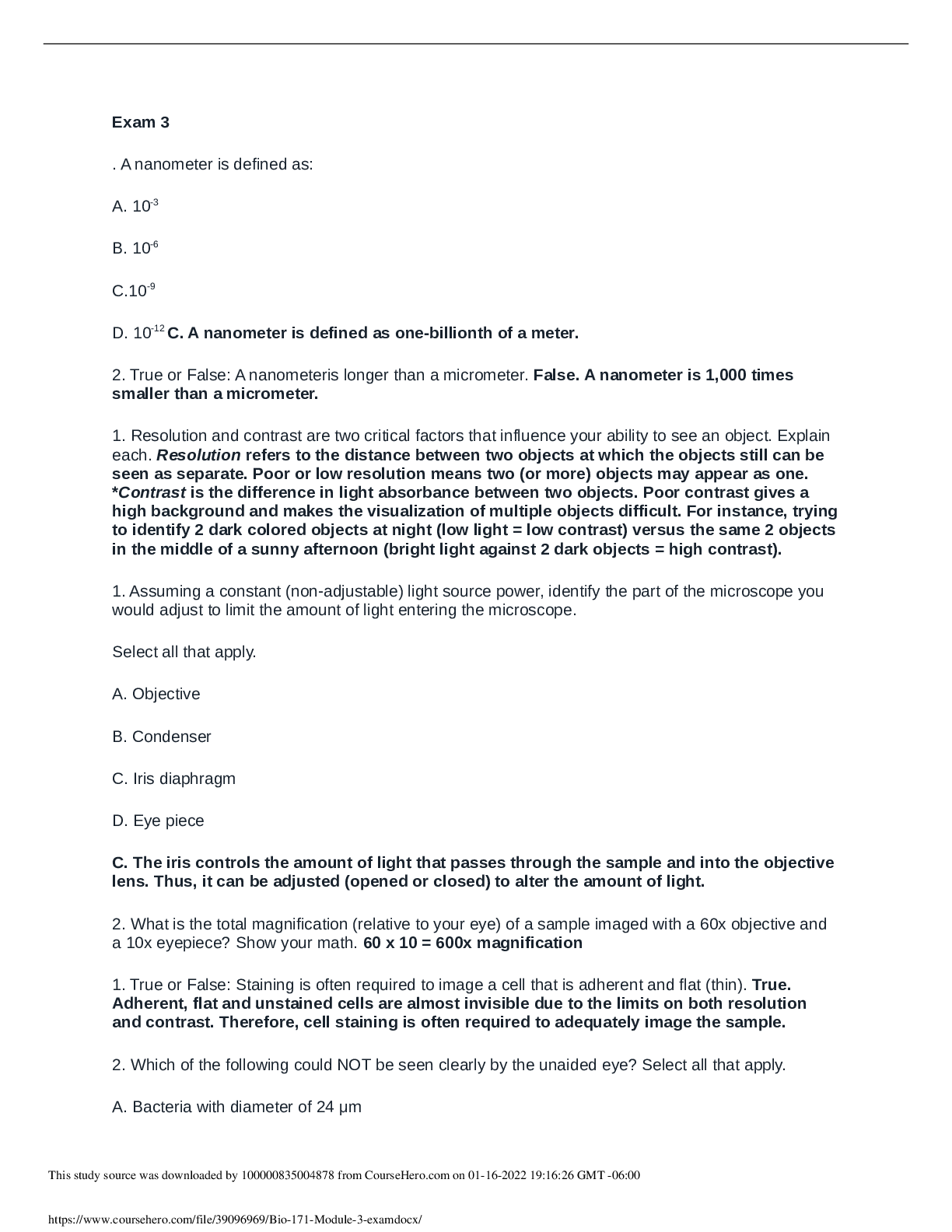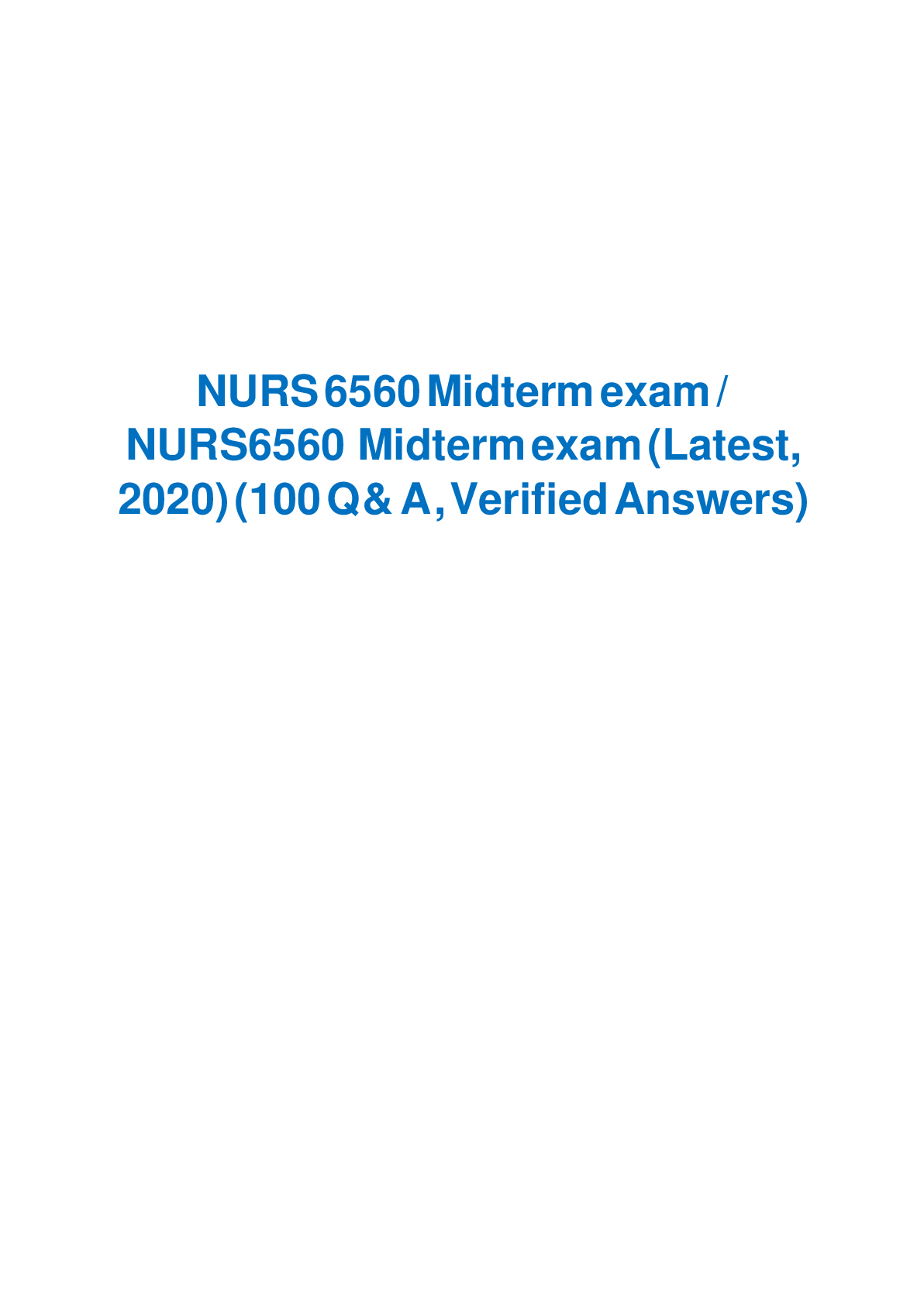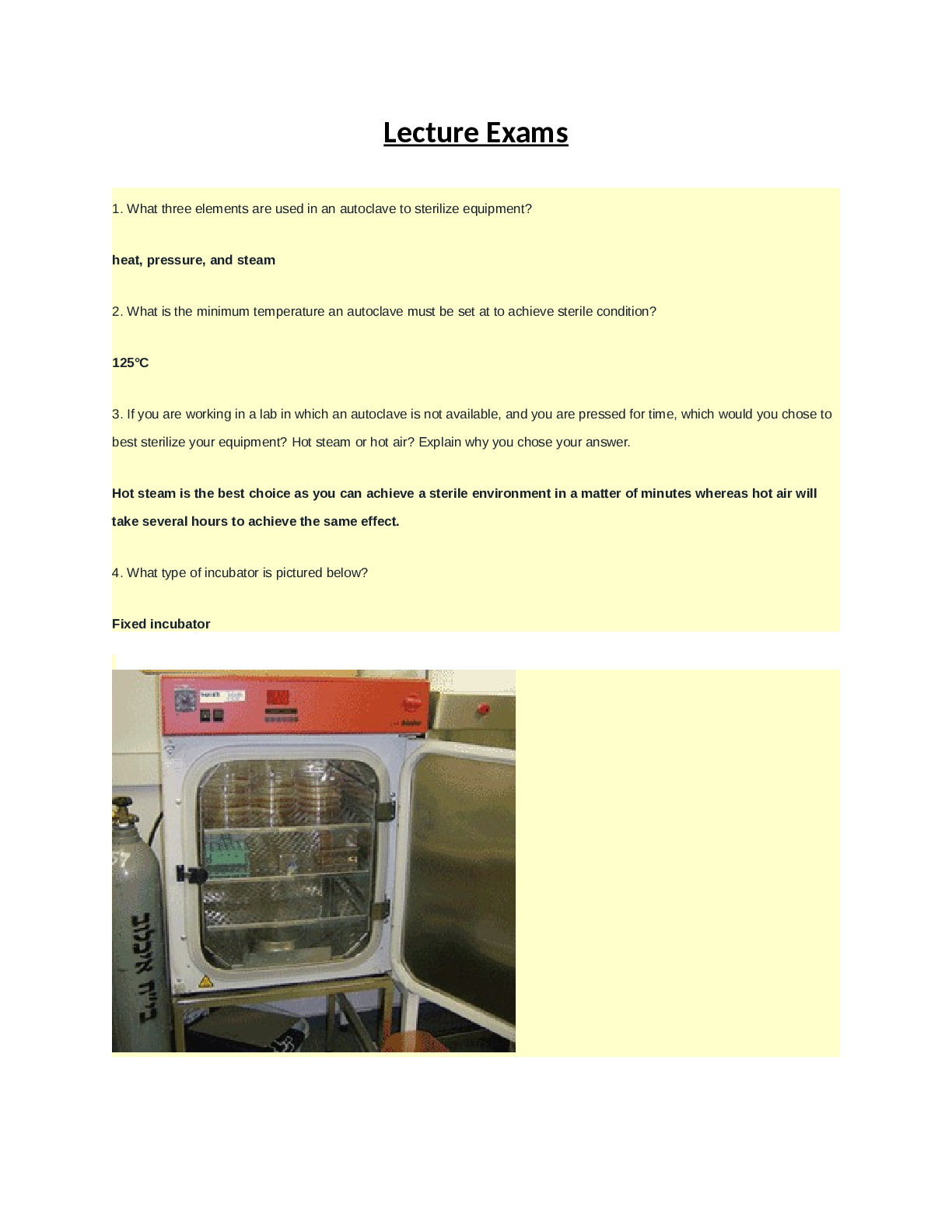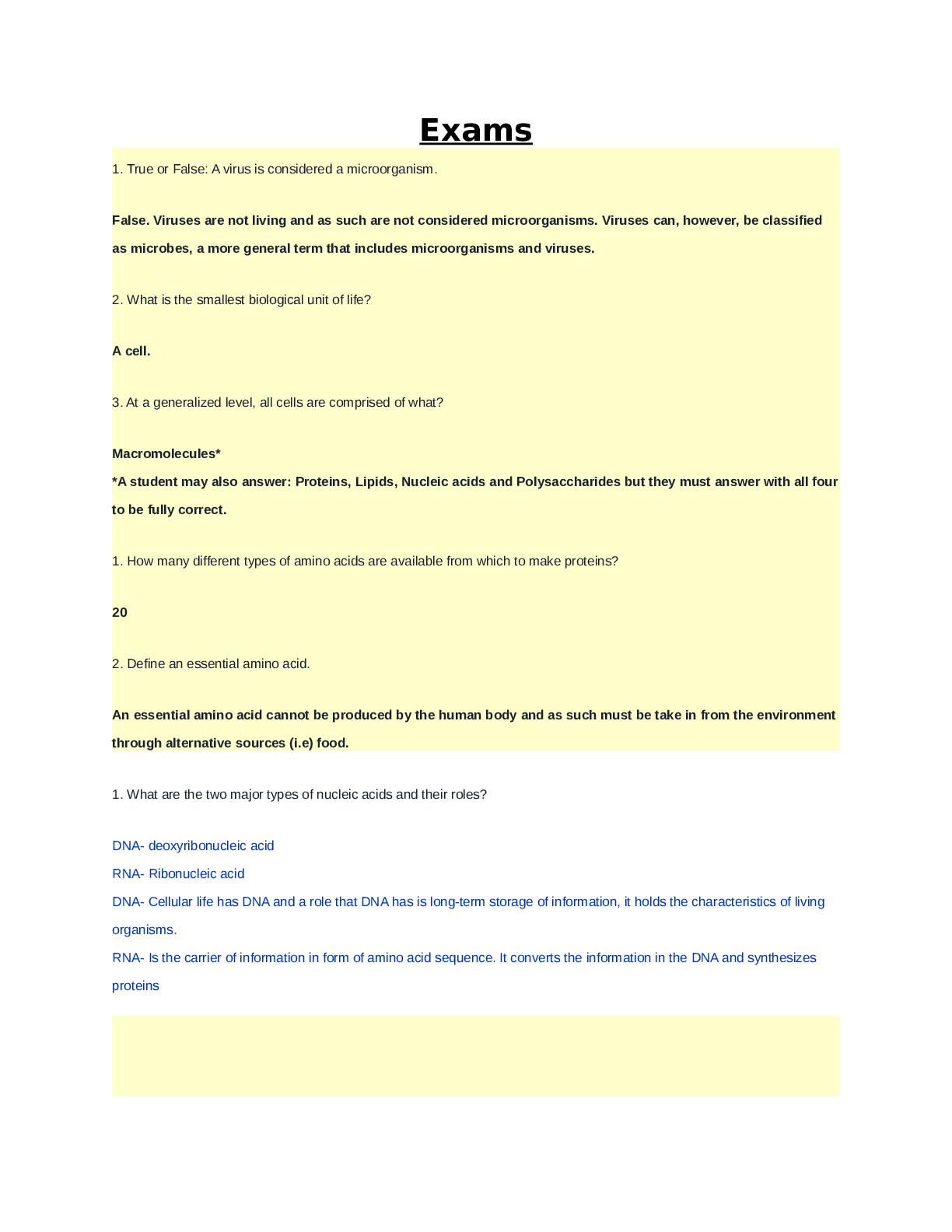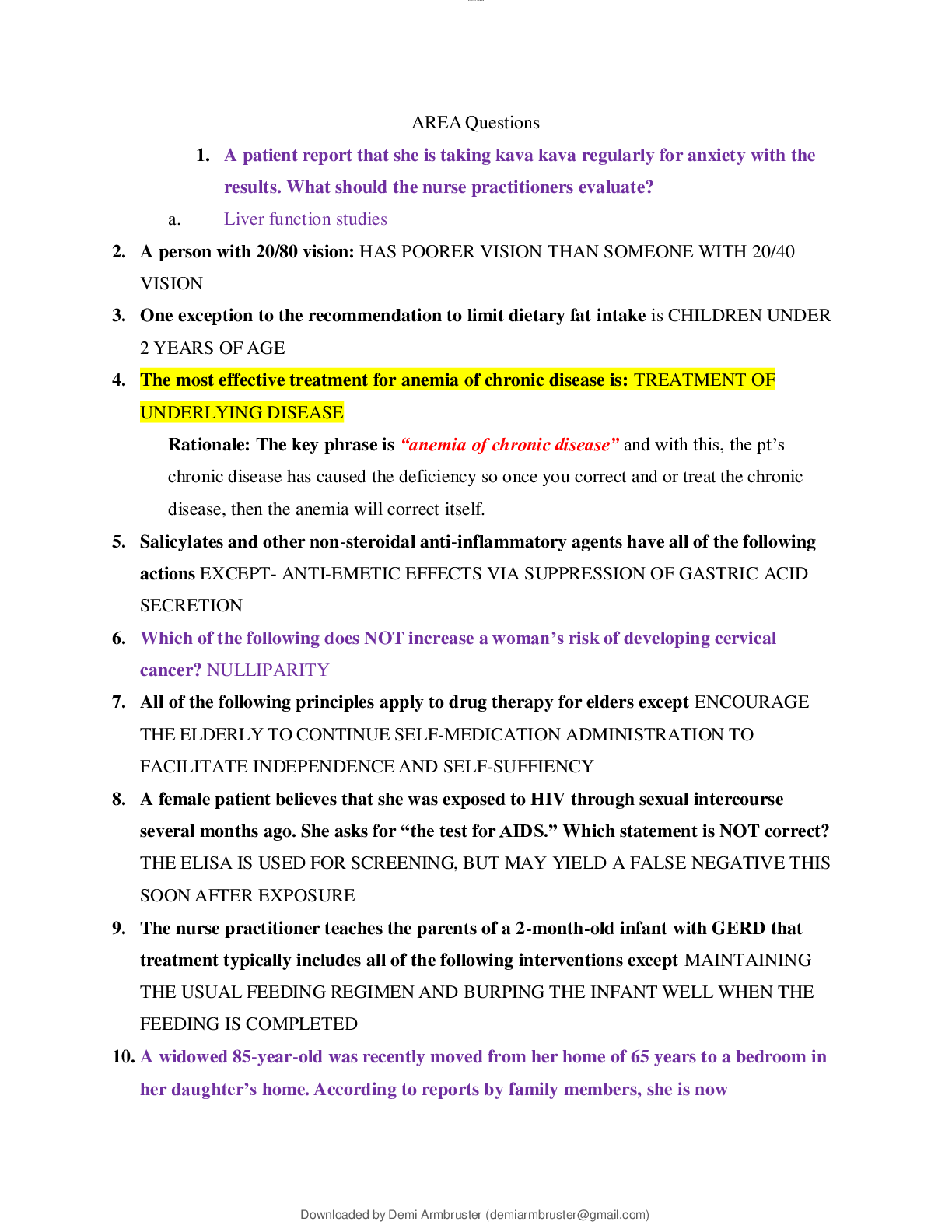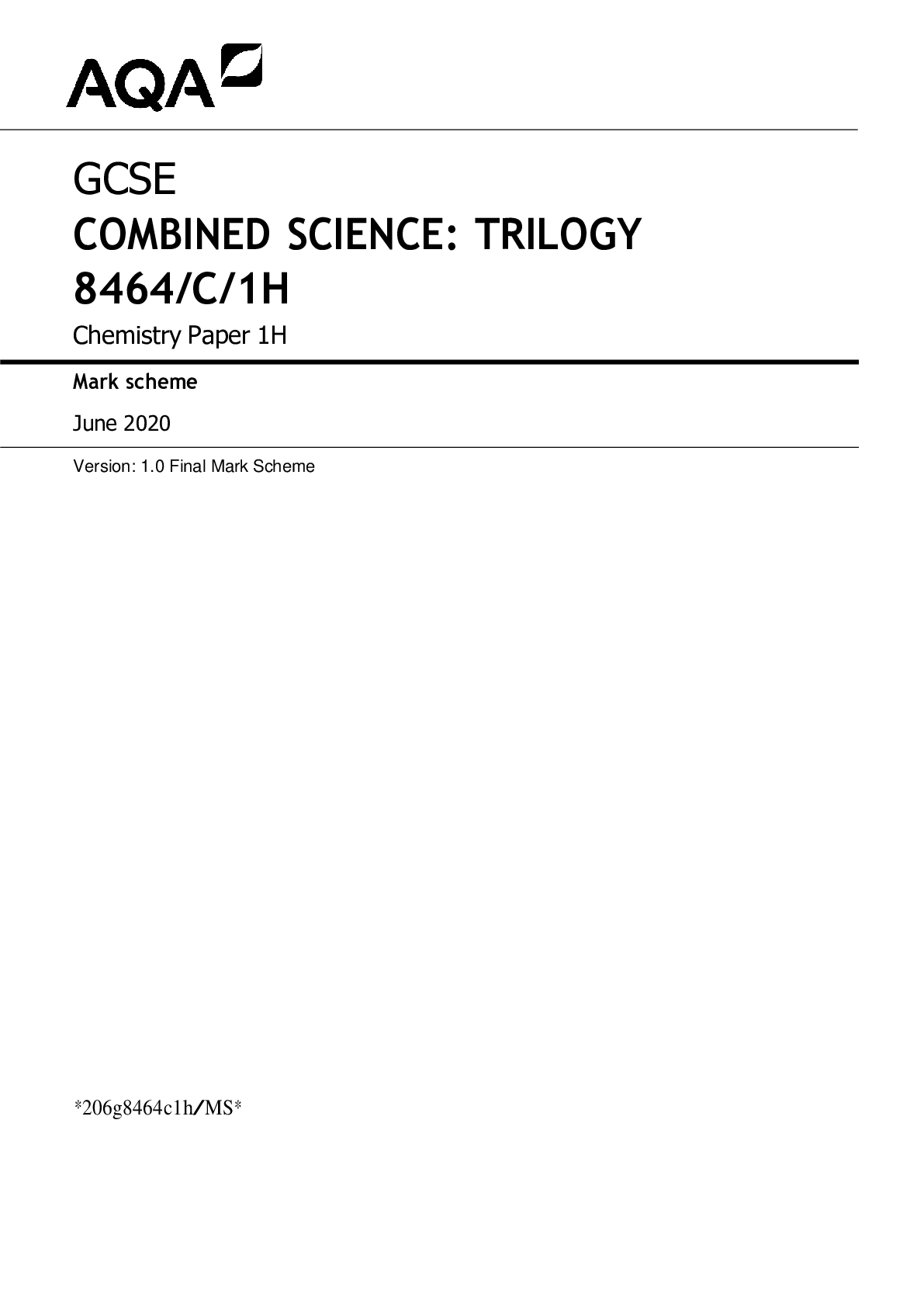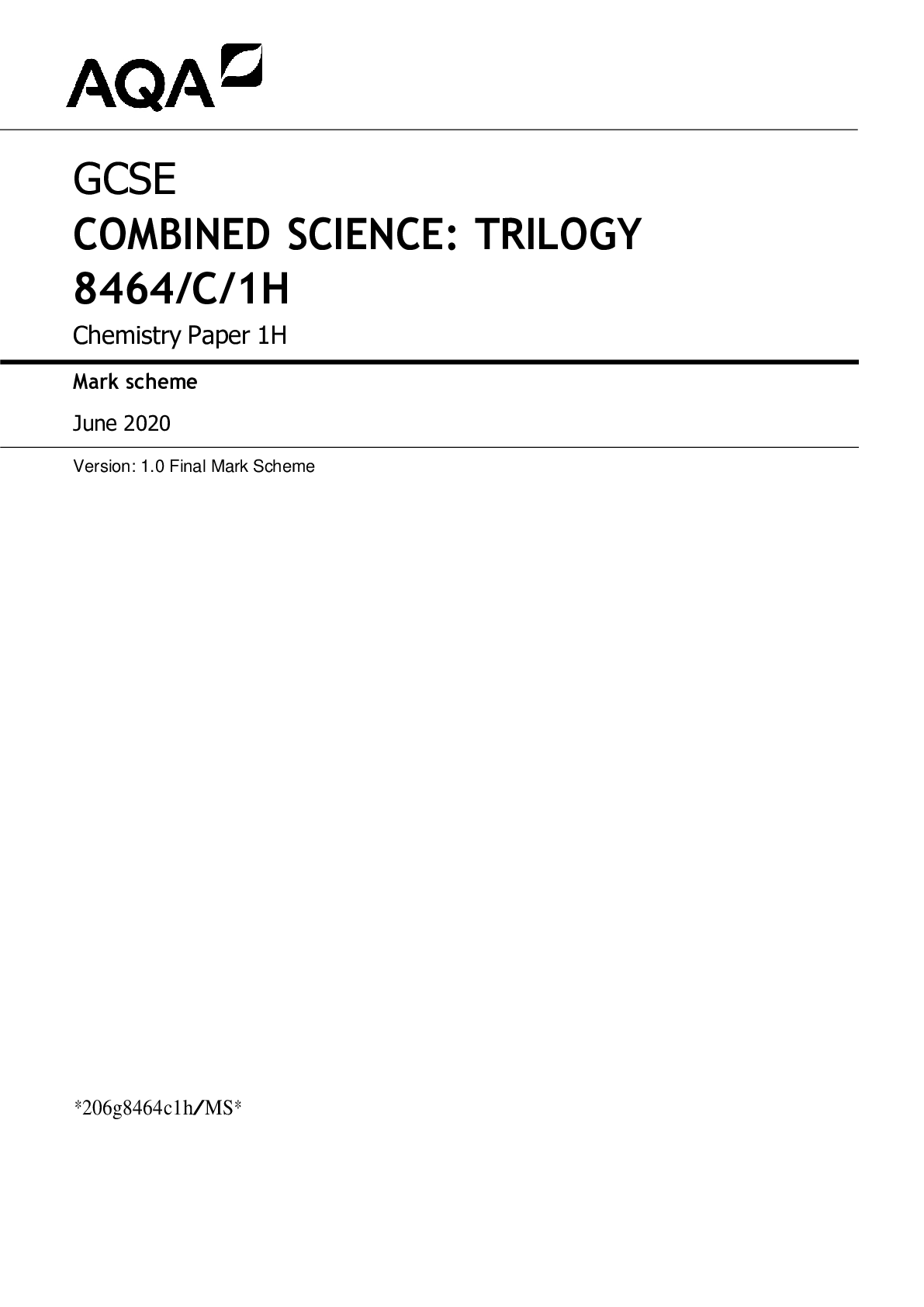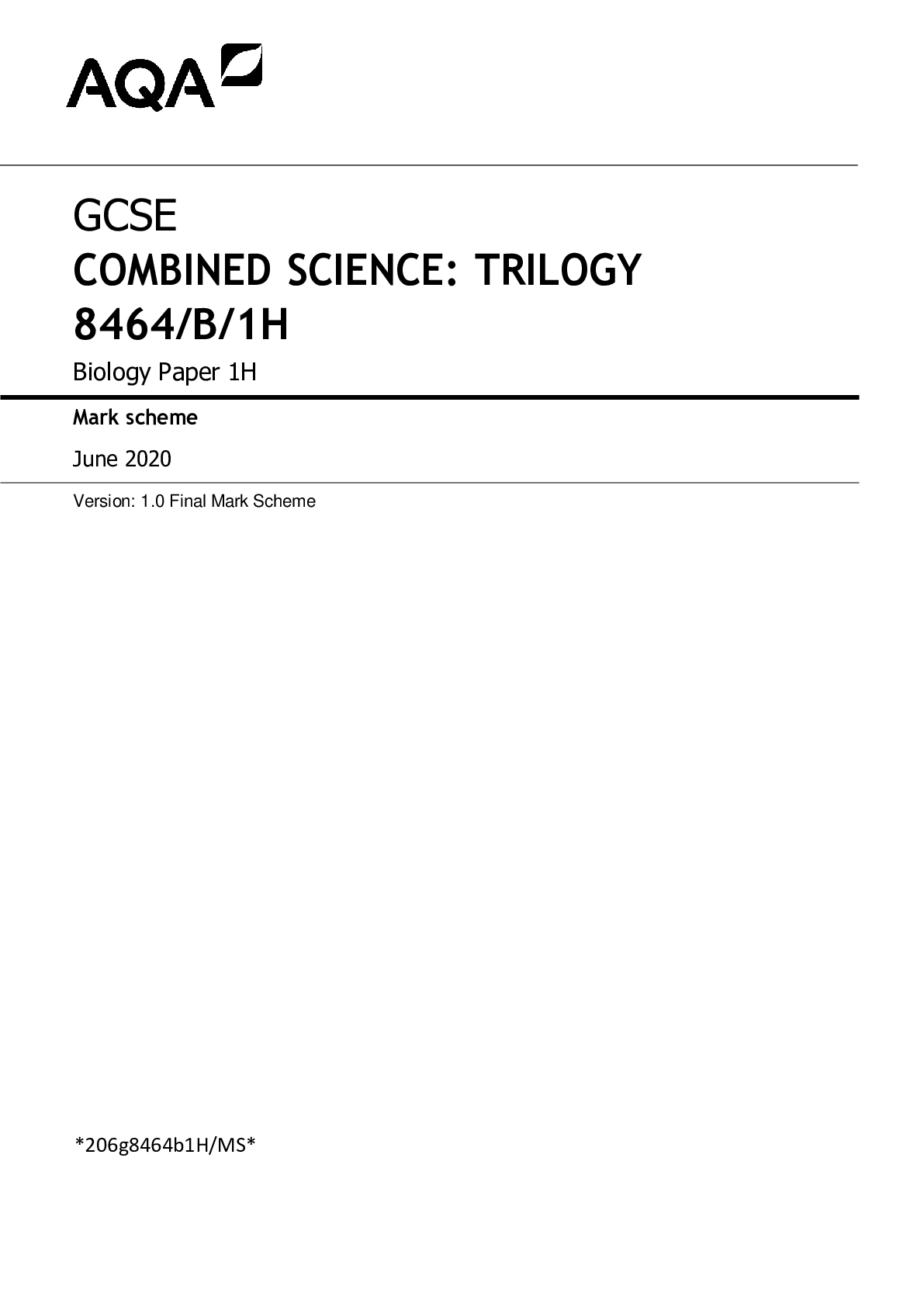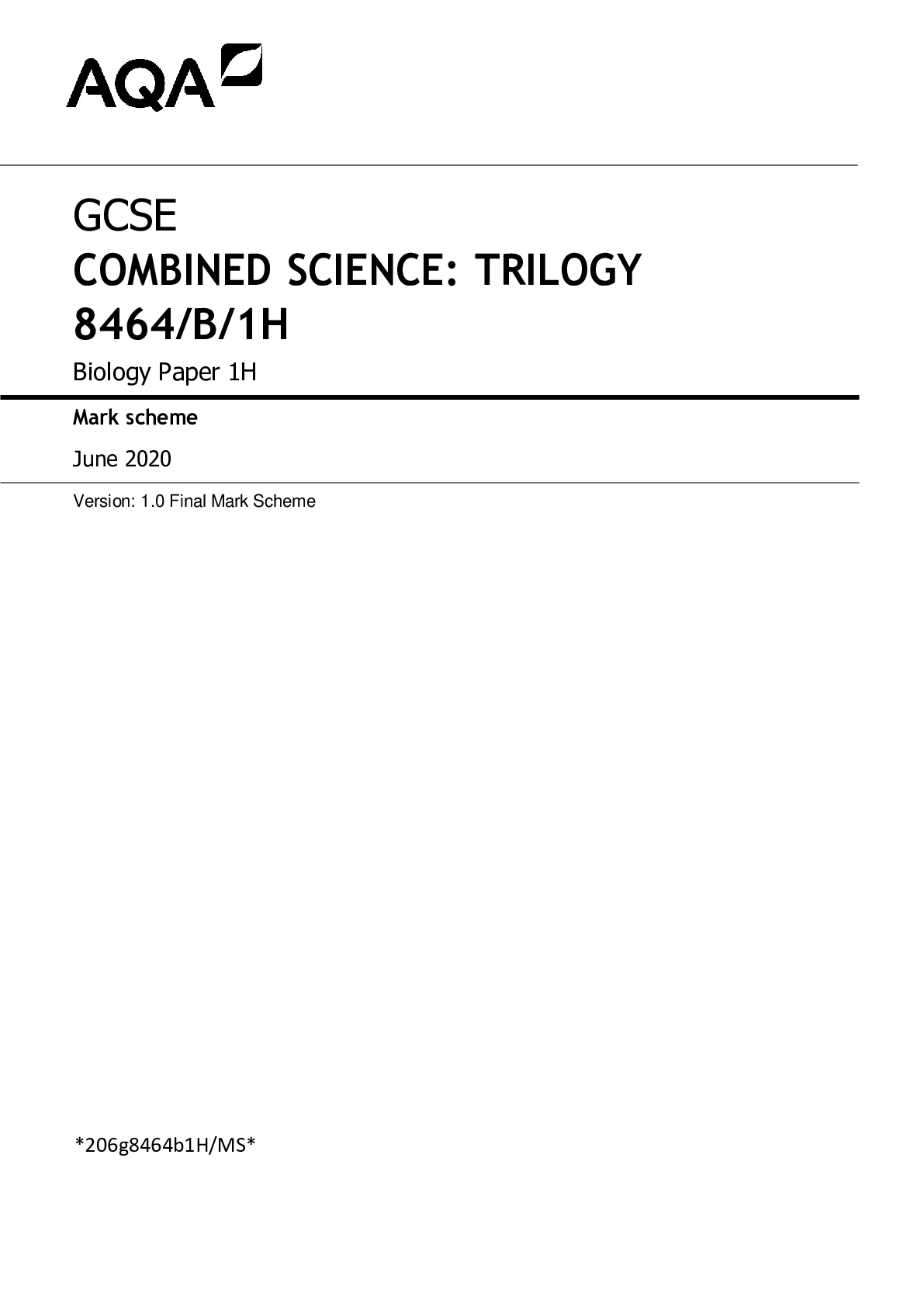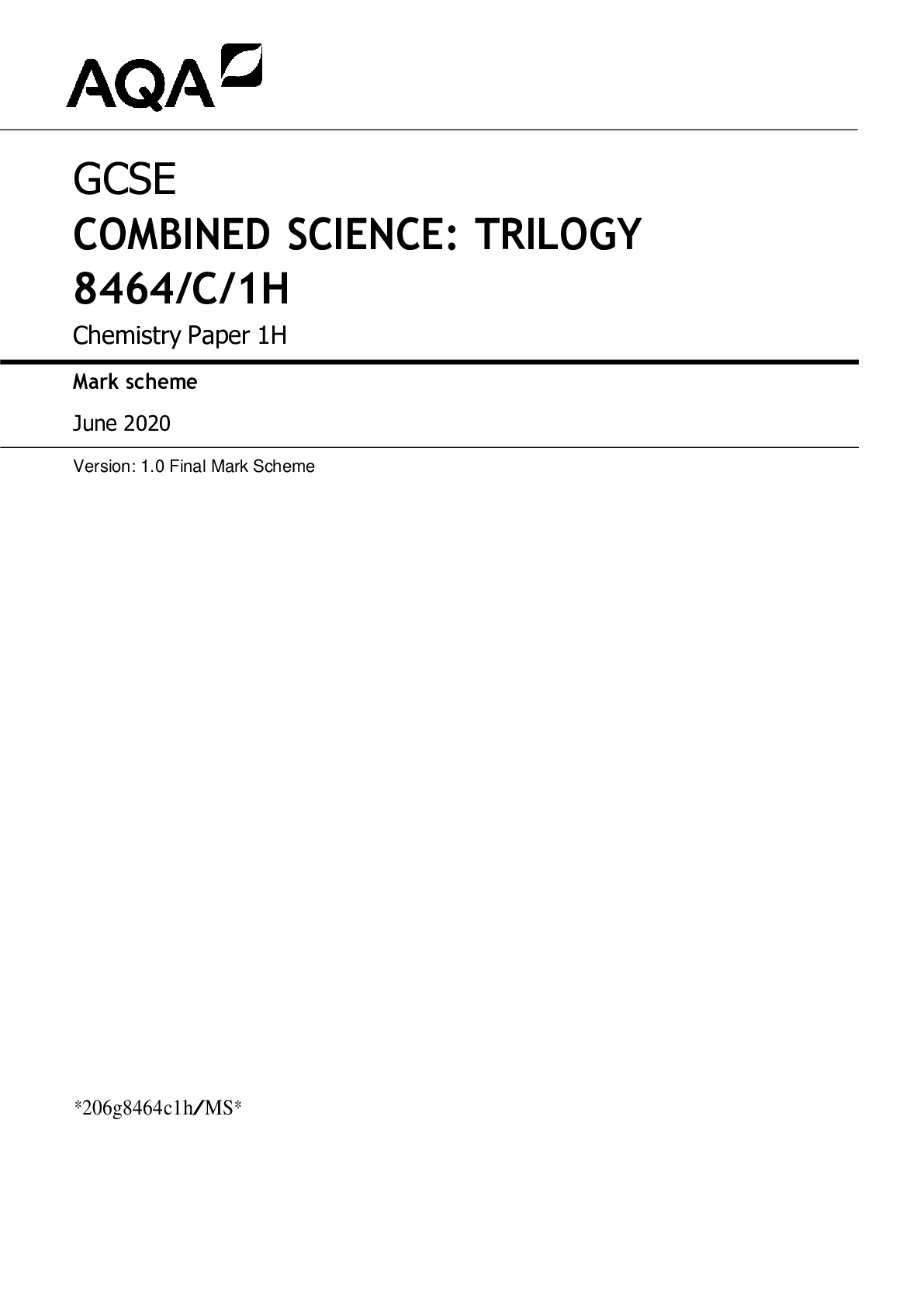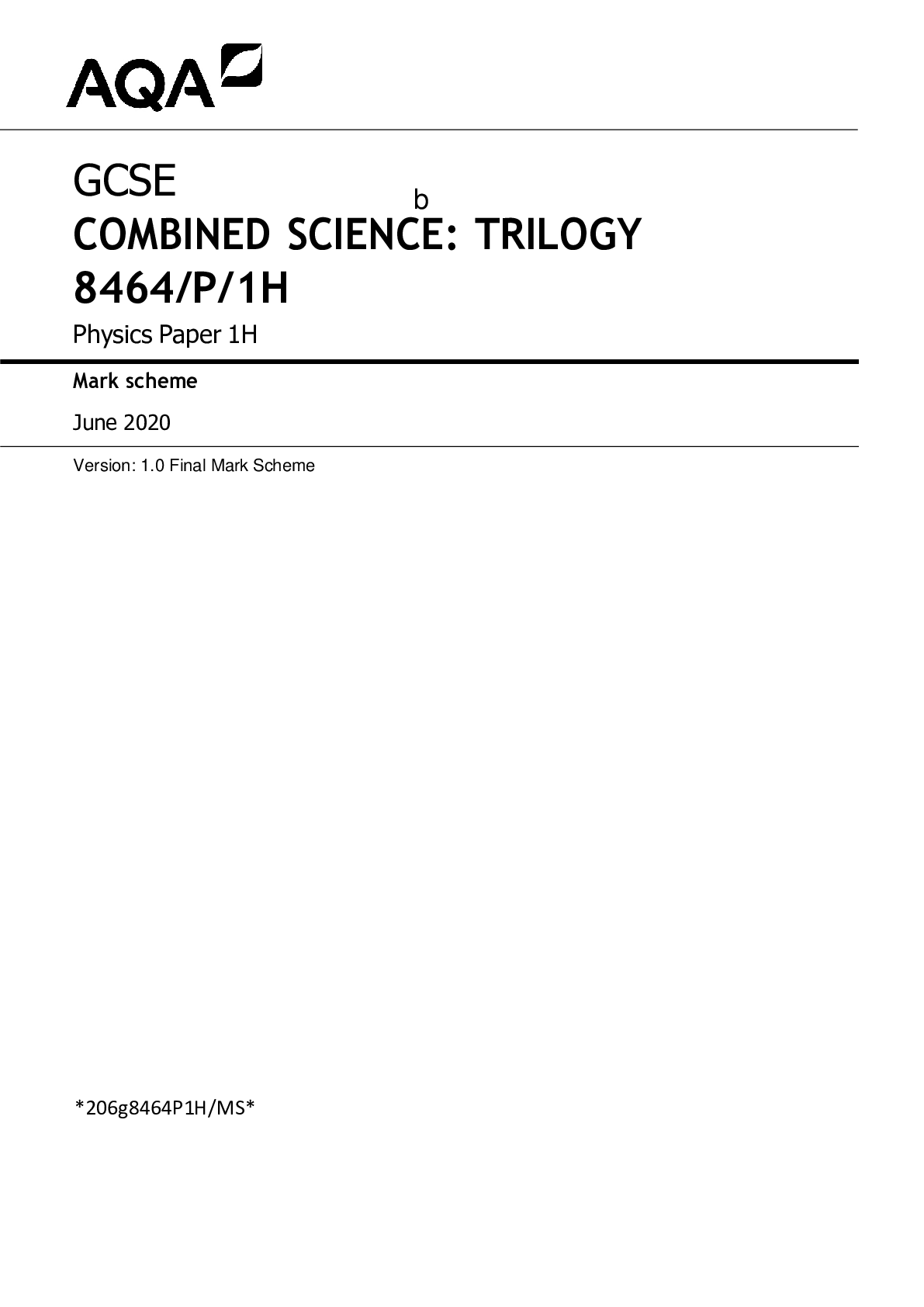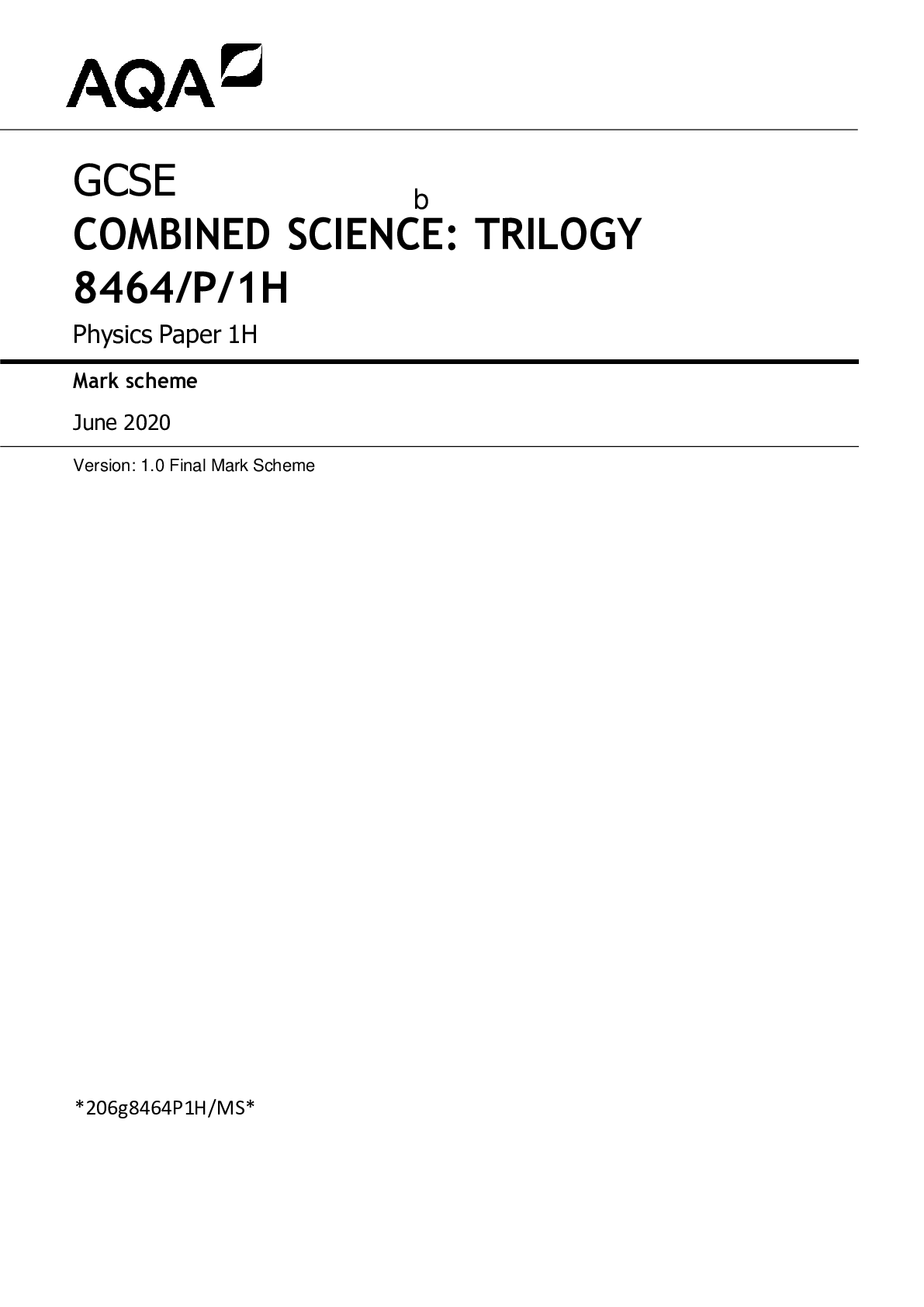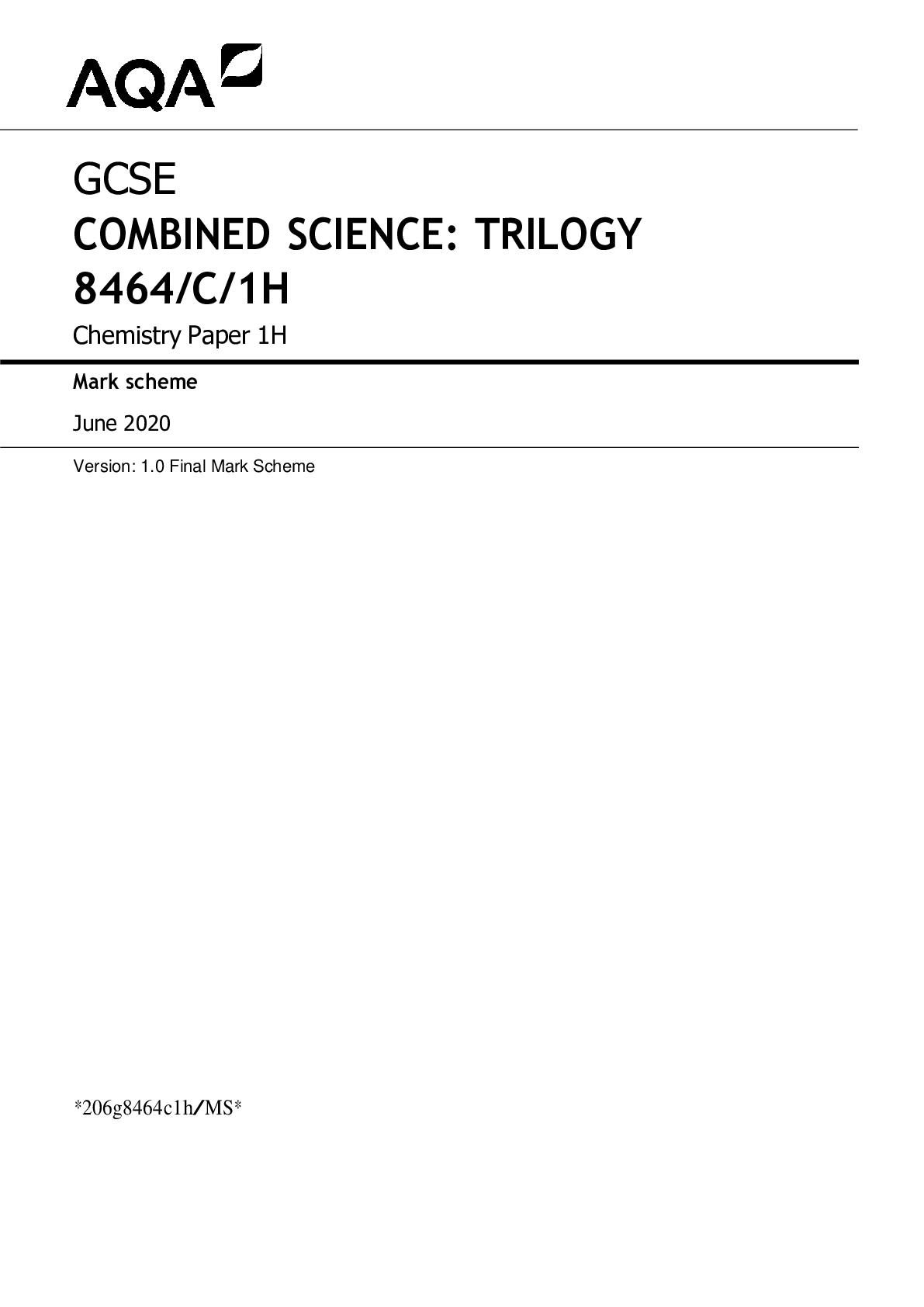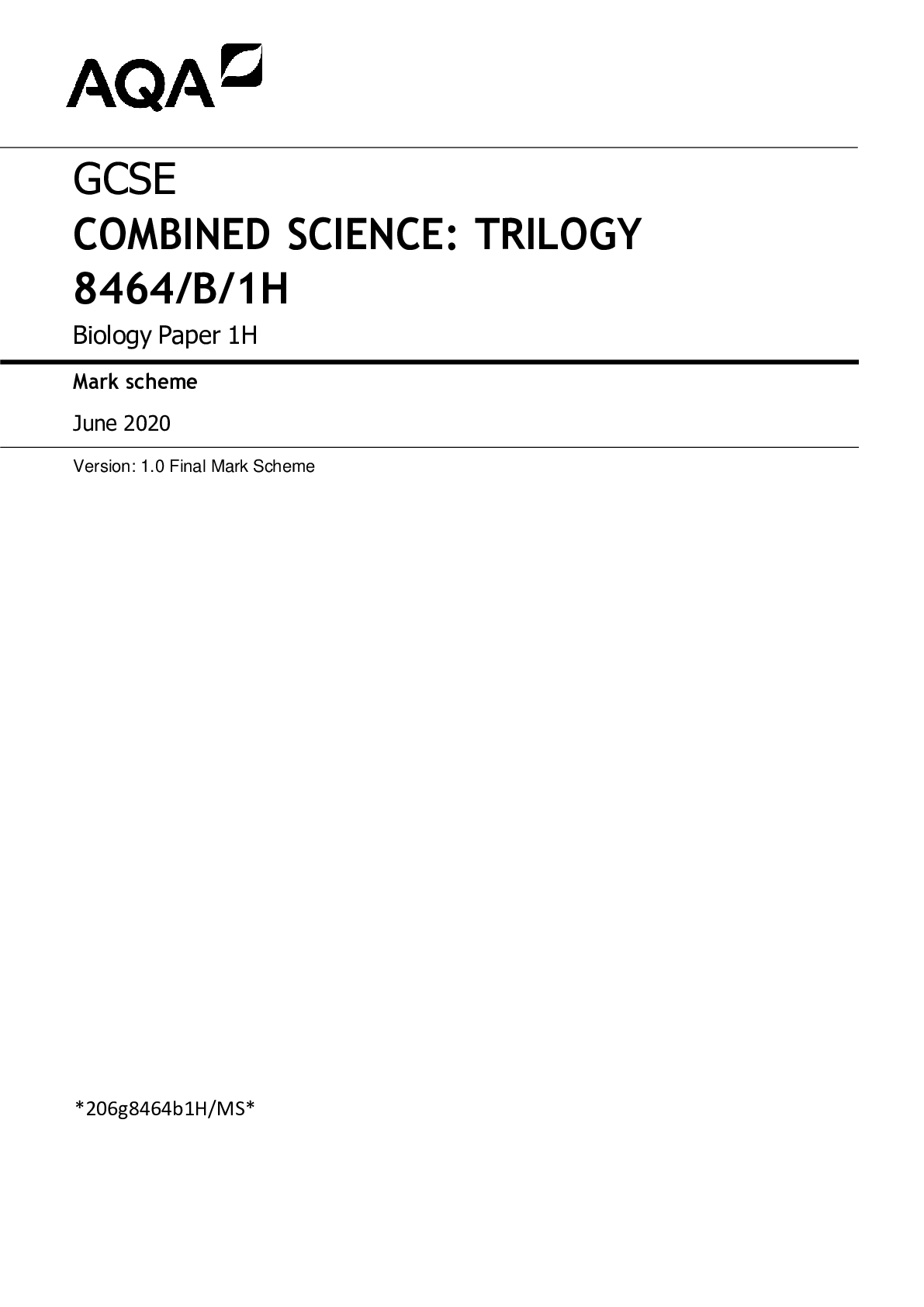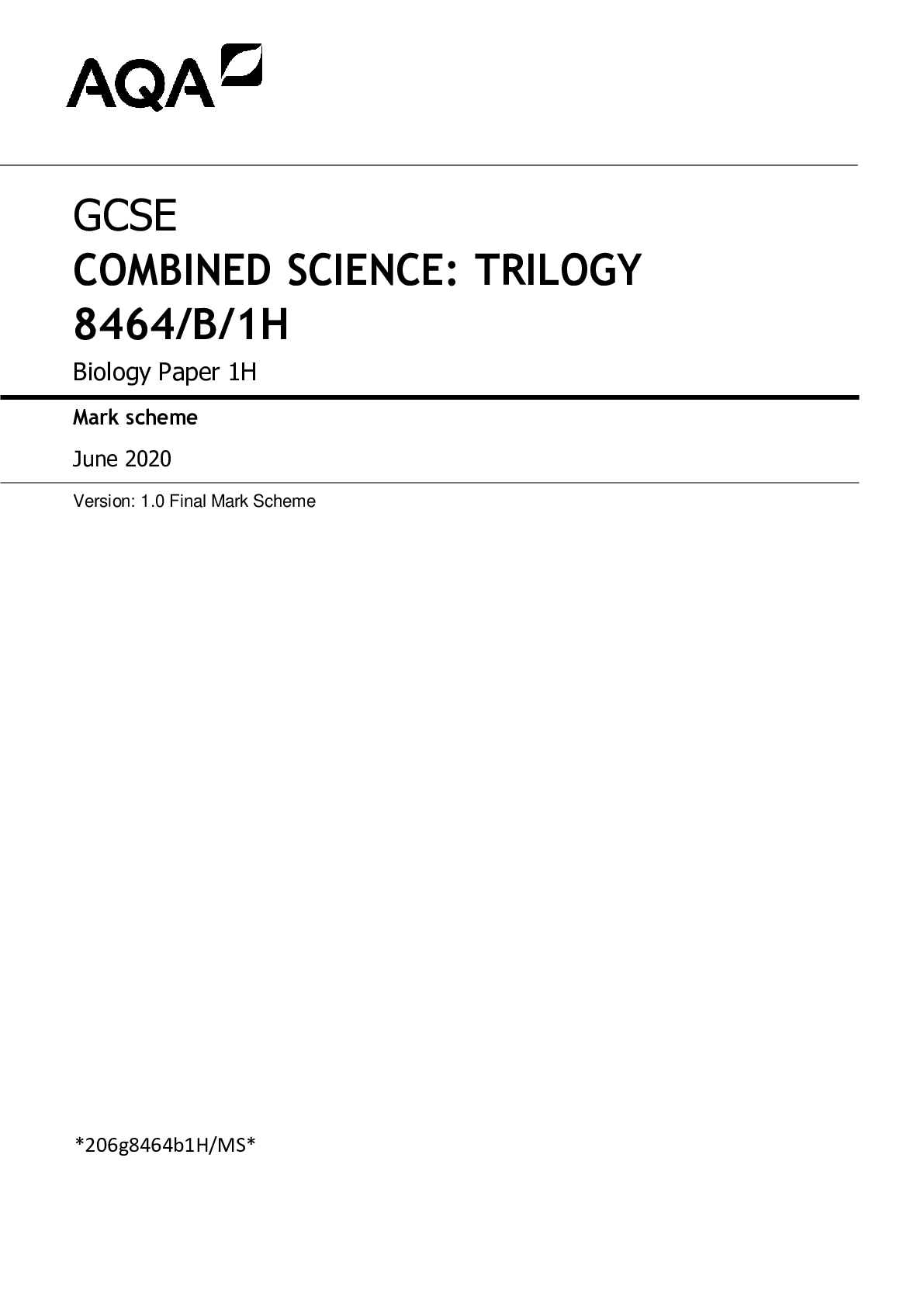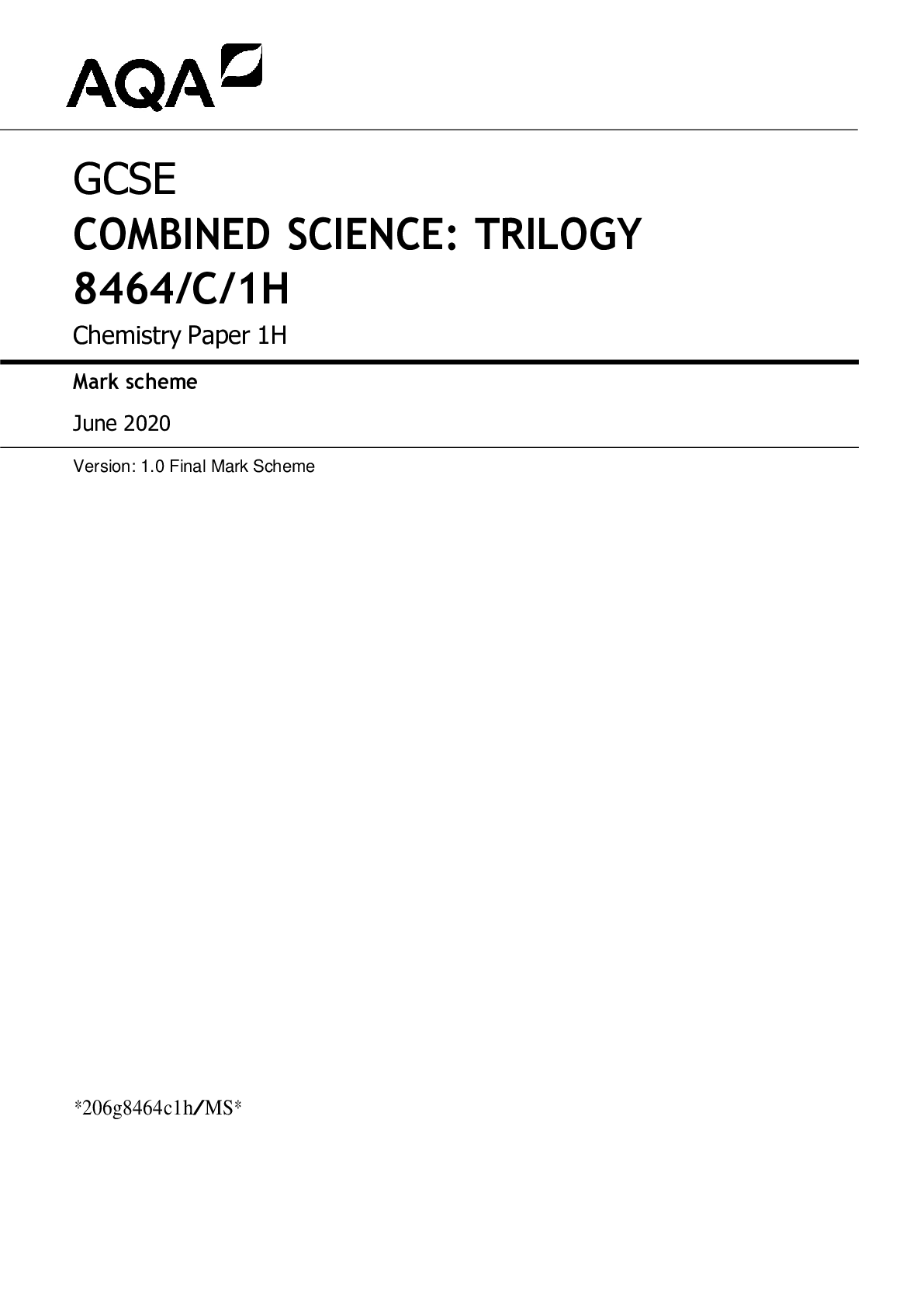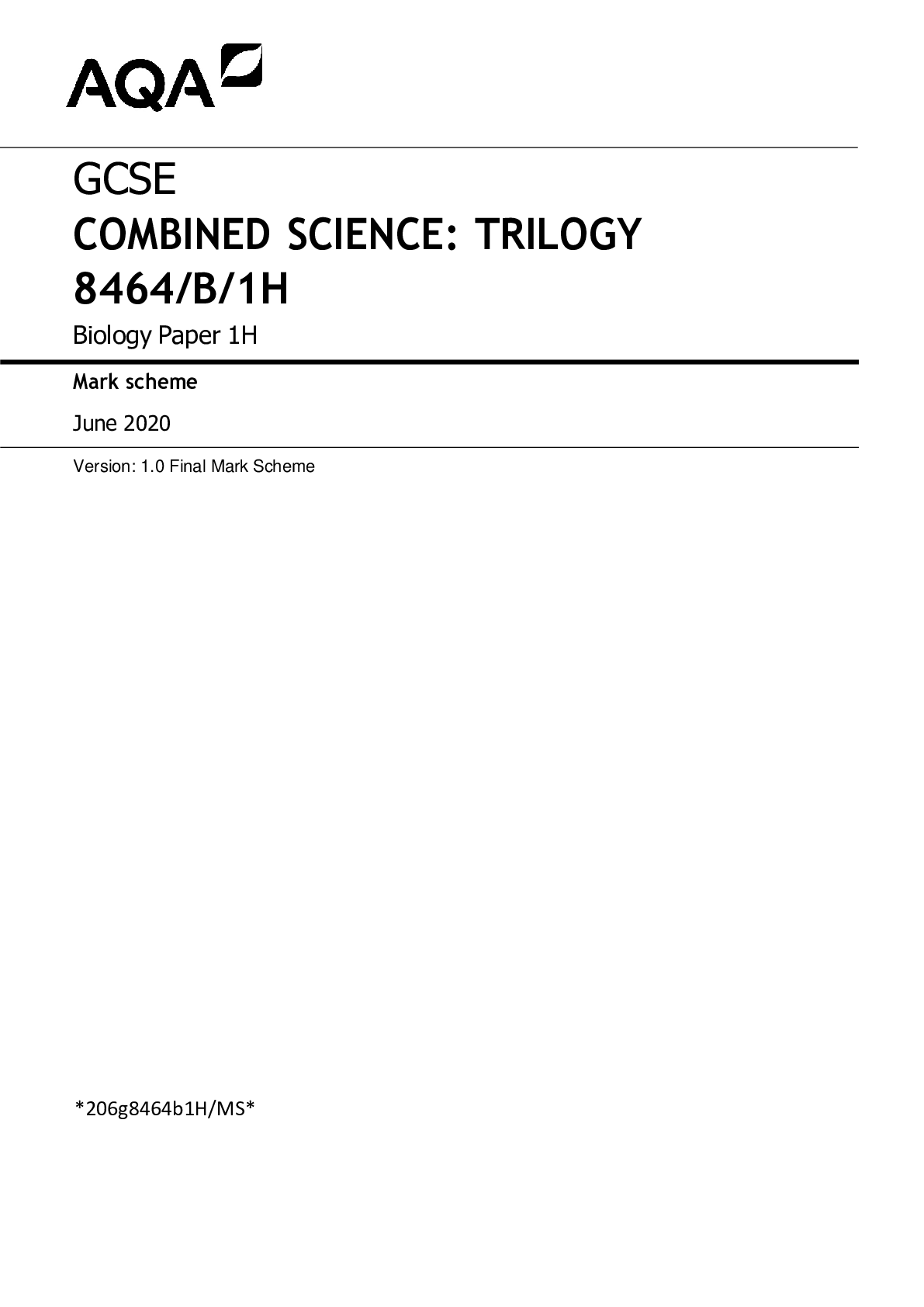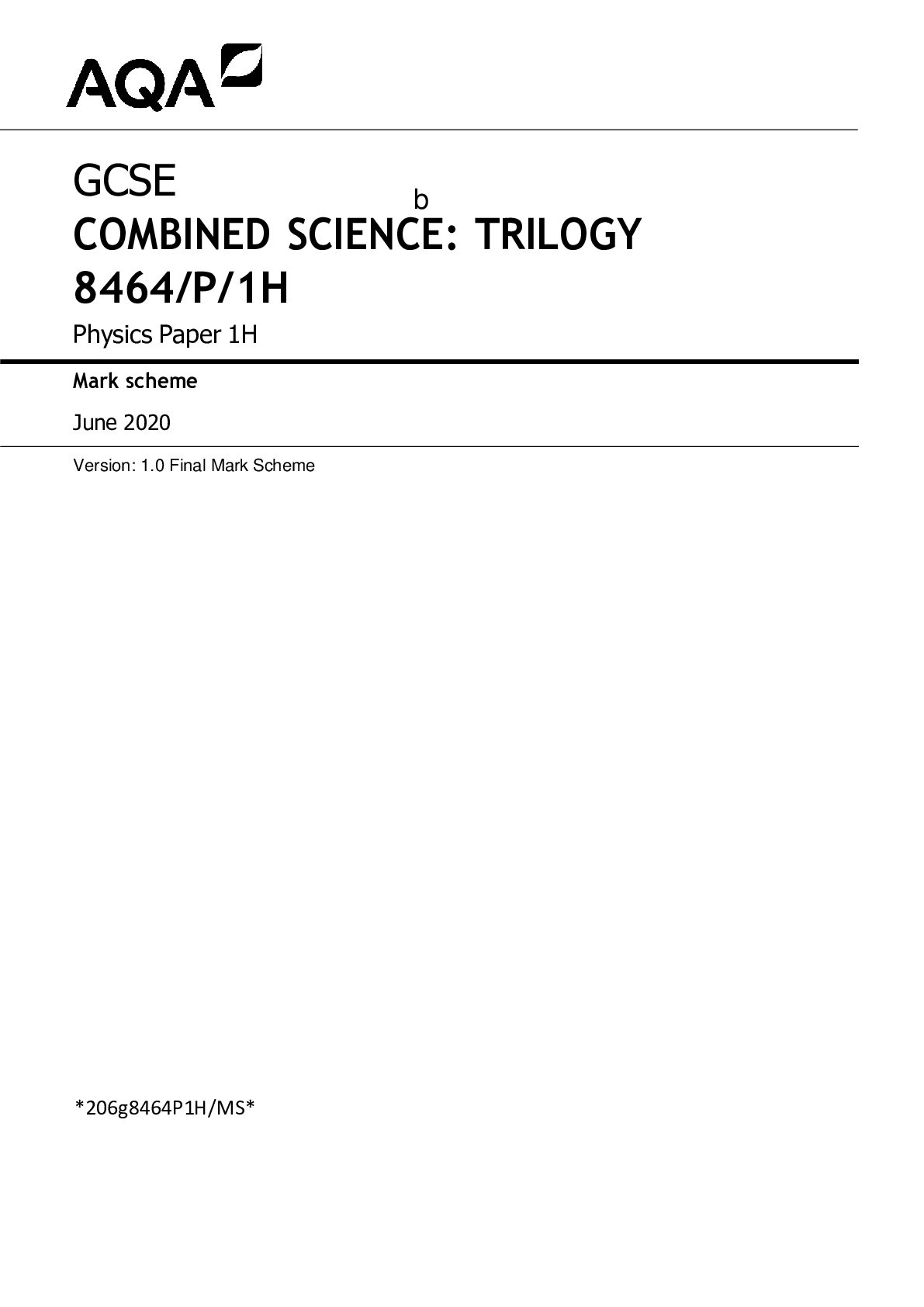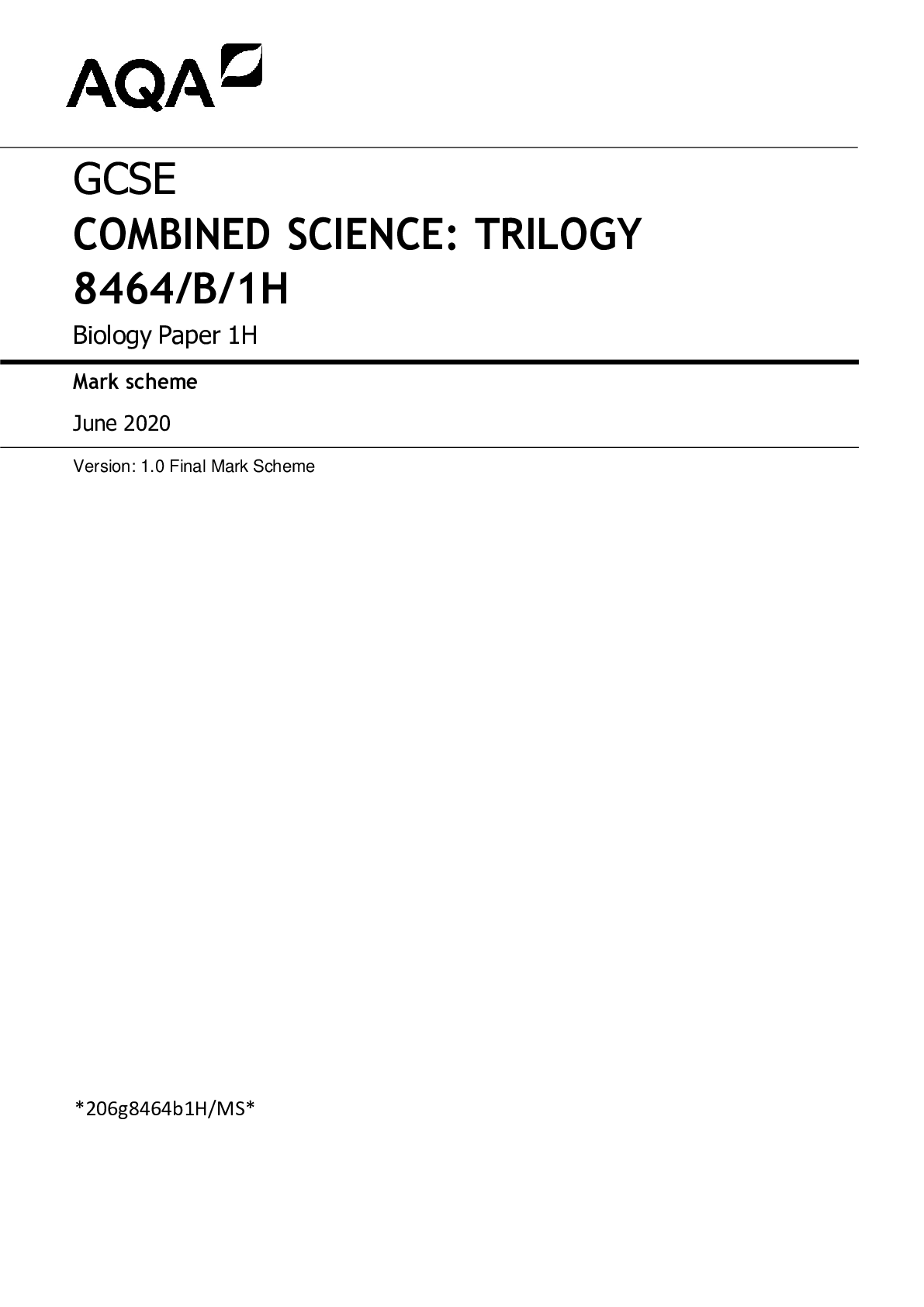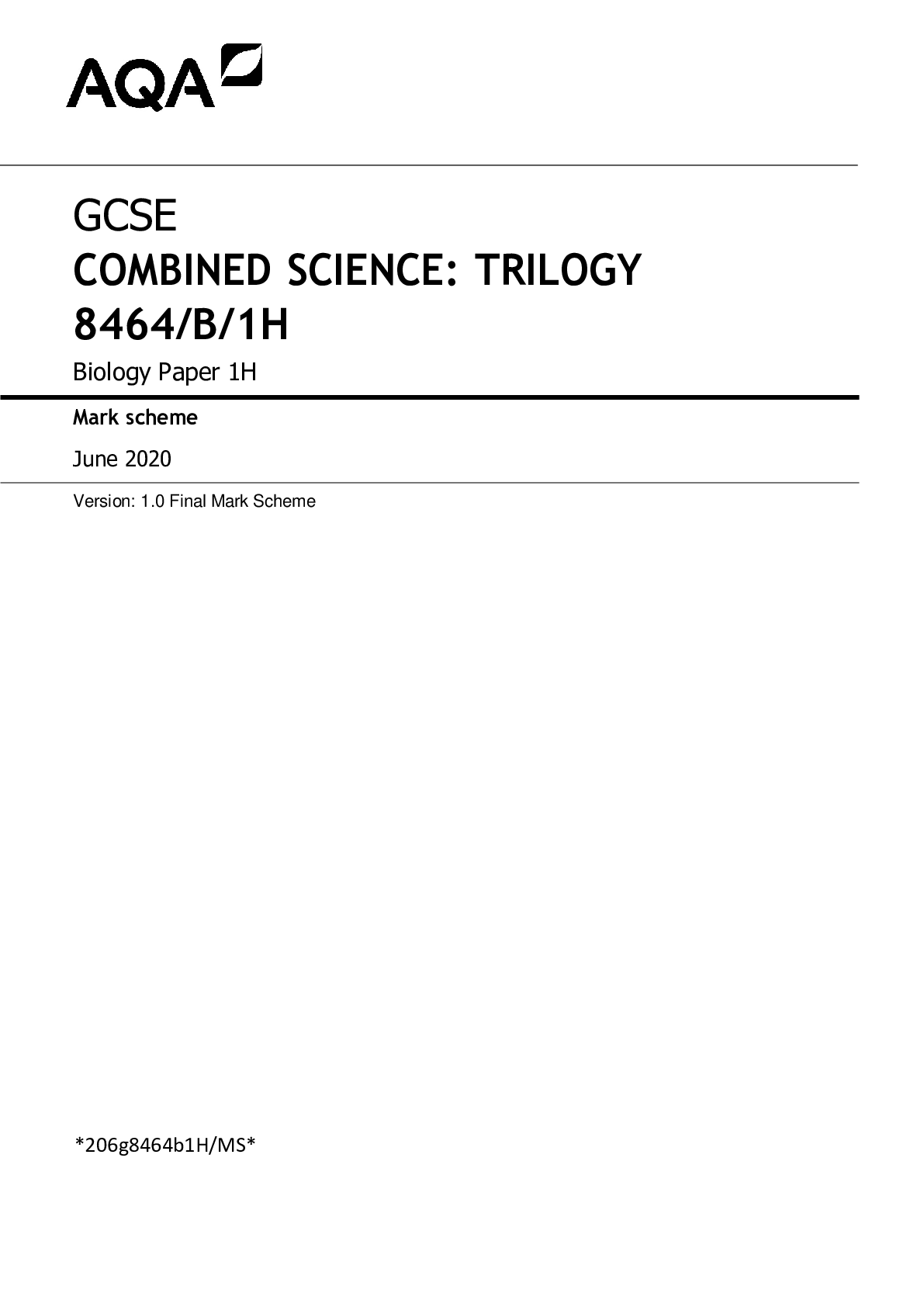Health Care > EXAM > AQA GCSE COMBINED SCIENCE TRILOGY 8464/P1H Physics Paper 1H (All)
AQA GCSE COMBINED SCIENCE TRILOGY 8464/P1H Physics Paper 1H
Document Content and Description Below
Mark schemes are prepared by the Lead Assessment Writer and considered, together with the relevant questions, by a panel of subject teachers. This mark scheme includes any amendments made at the sta... ndardisation events which all associates participate in and is the scheme which was used by them in this examination. The standardisation process ensures that the mark scheme covers the students’ responses to questions and that every associate understands and applies it in the same correct way. As preparation for standardisation each associate analyses a number of students’ scripts. Alternative answers not already covered by the mark scheme are discussed and legislated for. If, after the standardisation process, associates encounter unusual answers which have not been raised they are required to refer these to the Lead Examiner. It must be stressed that a mark scheme is a working document, in many cases further developed and expanded on the basis of students’ reactions to a particular paper. Assumptions about future mark schemes on the basis of one year’s document should be avoided; whilst the guiding principles of assessment remain constant, details will change, depending on the content of a particular examination paper. Further copies of this mark scheme are available from aqa.org.uk Copyright information AQA retains the copyright on all its publications. However, registered schools/colleges for AQA are permitted to copy material from this booklet for their own internal use, with the following important exception: AQA cannot give permission to schools/colleges to photocopy any material that is acknowledged to a third party even for internal use within the centre. Copyright © 2020 AQA and its licensors. All rights reserved. MARK SCHEME – GCSE COMBINED SCIENCE: TRILOGY – 8464/P/1H – JUNE 2020 3 Information to Examiners 1. General The mark scheme for each question shows: the marks available for each part of the question the total marks available for the question the typical answer or answers which are expected extra information to help the Examiner make his or her judgement the Assessment Objectives, level of demand and specification content that each question is intended to cover. The extra information is aligned to the appropriate answer in the left-hand part of the mark scheme and should only be applied to that item in the mark scheme. At the beginning of a part of a question a reminder may be given, for example: where consequential marking needs to be considered in a calculation; or the answer may be on the diagram or at a different place on the script. In general the right-hand side of the mark scheme is there to provide those extra details which confuse the main part of the mark scheme yet may be helpful in ensuring that marking is straightforward and consistent. 2. Emboldening and underlining 2.1 In a list of acceptable answers where more than one mark is available ‘any two from’ is used, with the number of marks emboldened. Each of the following bullet points is a potential mark. 2.2 A bold and is used to indicate that both parts of the answer are required to award the mark. 2.3 Alternative answers acceptable for a mark are indicated by the use of or. Different terms in the mark scheme are shown by a / ; eg allow smooth / free movement. 2.4 Any wording that is underlined is essential for the marking point to be awarded. MARK SCHEME – GCSE COMBINED SCIENCE: TRILOGY – 8464/P/1H – JUNE 2020 4 3. Marking points 3.1 Marking of lists This applies to questions requiring a set number of responses, but for which students have provided extra responses. The general principle to be followed in such a situation is that ‘right + wrong = wrong’. Each error / contradiction negates each correct response. So, if the number of error / contradictions equals or exceeds the number of marks available for the question, no marks can be awarded. However, responses considered to be neutral (indicated as * in example 1) are not penalised. Example 1: What is the pH of an acidic solution? Student Response Marks awarded 1 green, 5 0 2 red*, 5 1 3 red*, 8 0 Example 2: Name two planets in the solar system. Student Response Marks awarded 1 Neptune, Mars, Moon 1 2 Neptune, Sun, Mars, [Show More]
Last updated: 1 year ago
Preview 1 out of 17 pages
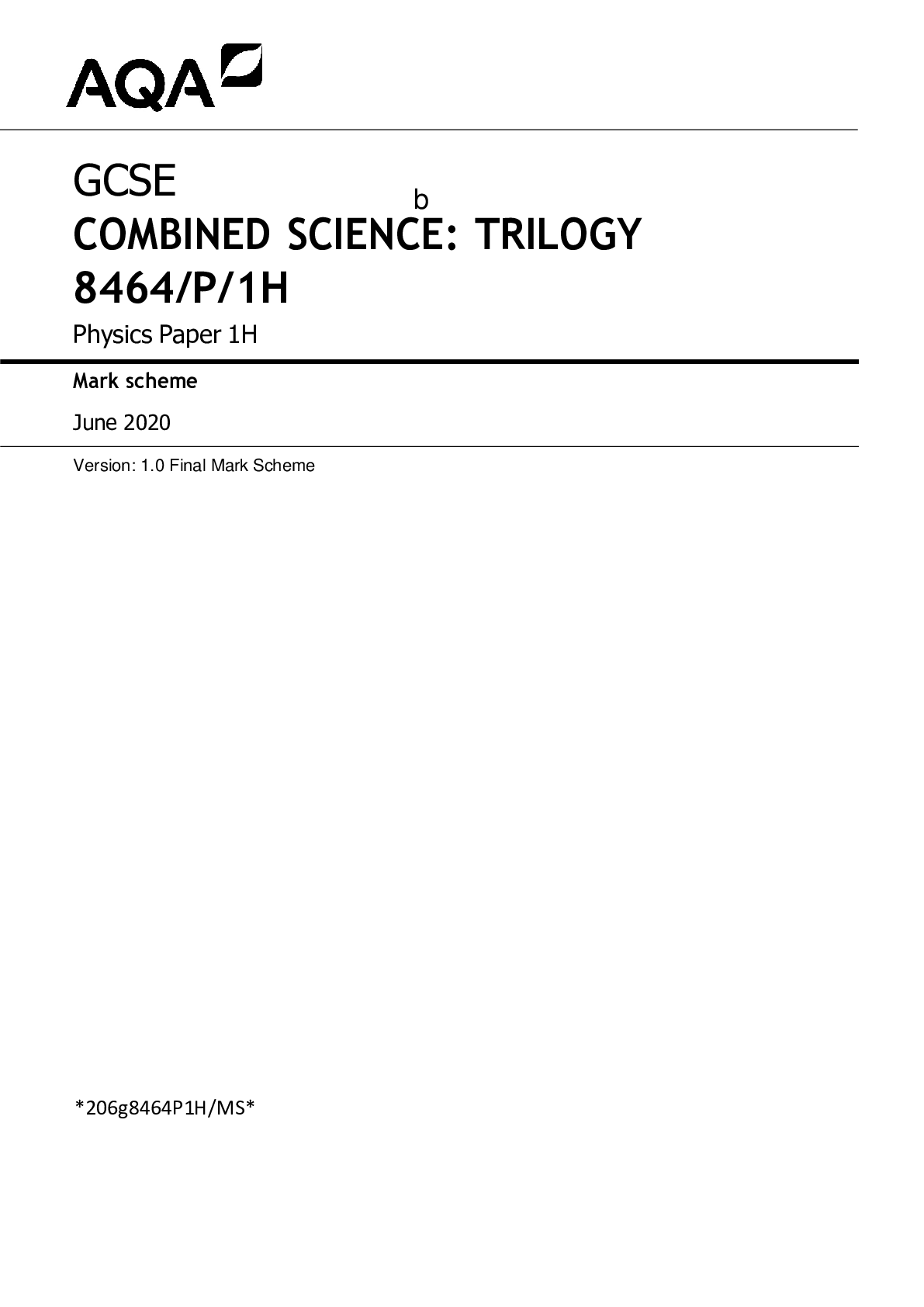
Reviews( 0 )
Document information
Connected school, study & course
About the document
Uploaded On
Apr 25, 2022
Number of pages
17
Written in
Additional information
This document has been written for:
Uploaded
Apr 25, 2022
Downloads
0
Views
41

 NUR 2115 Fundamentals of Professional Nursing Exam 1 NUR2115 Fundamentals of Professional Nursing Exam 1 Rasmussen College.png)
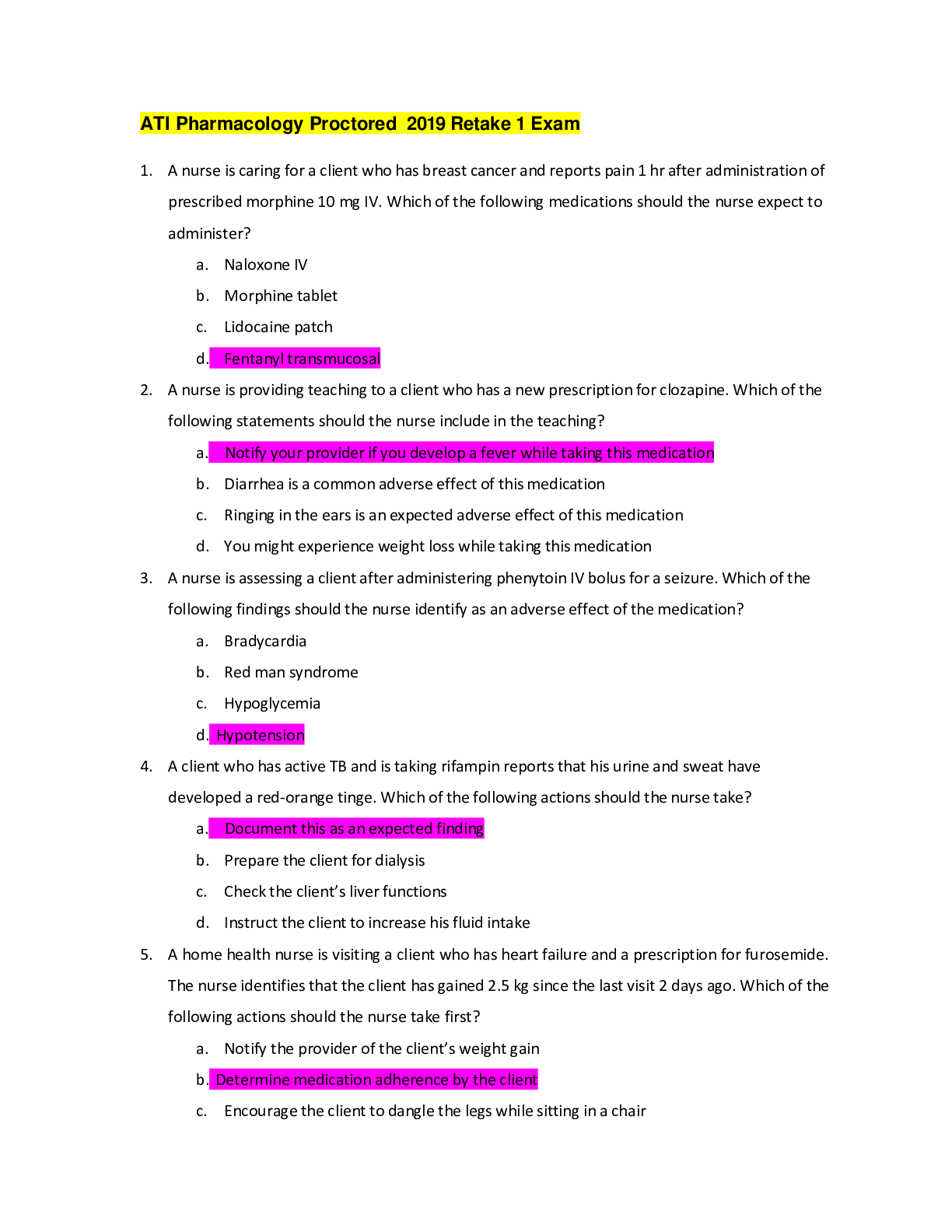

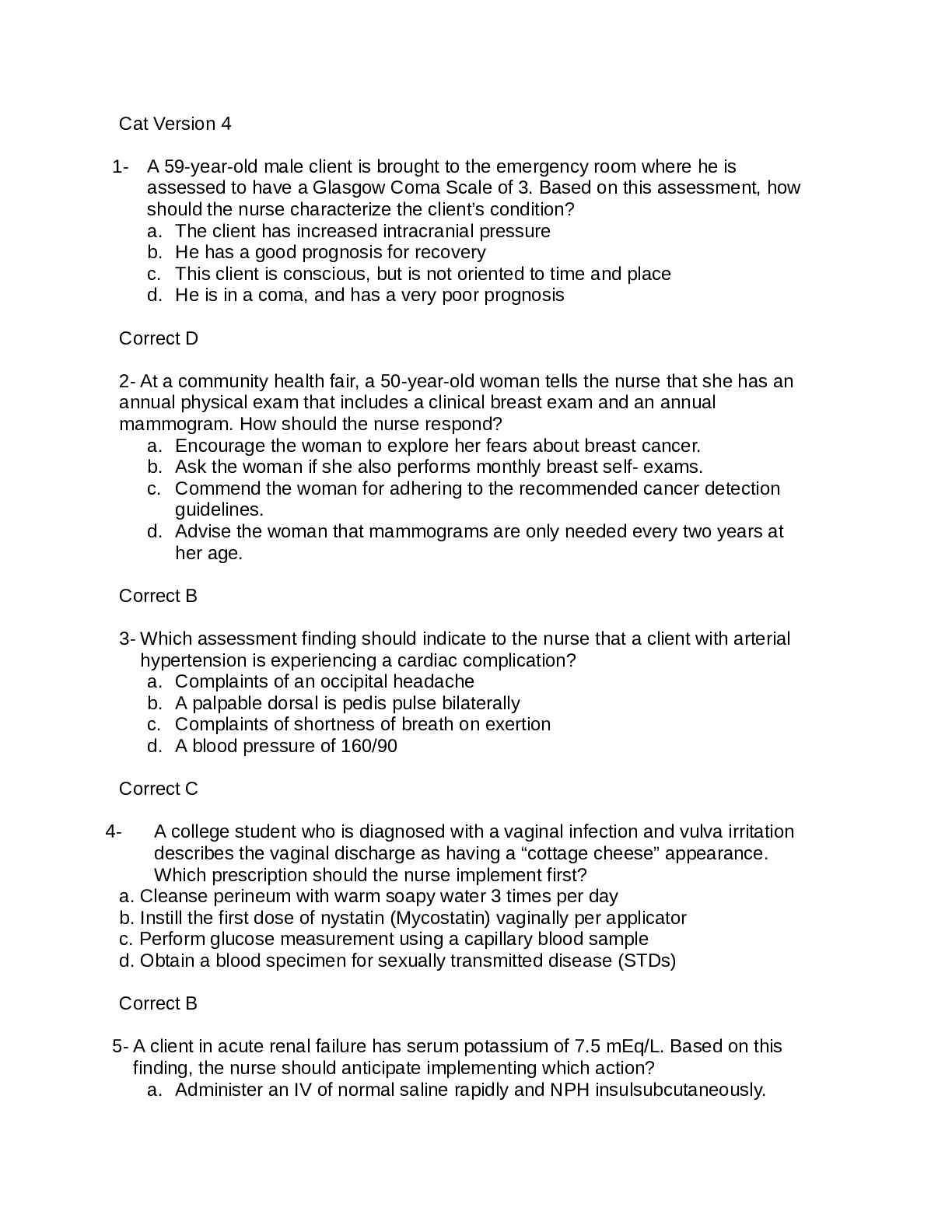
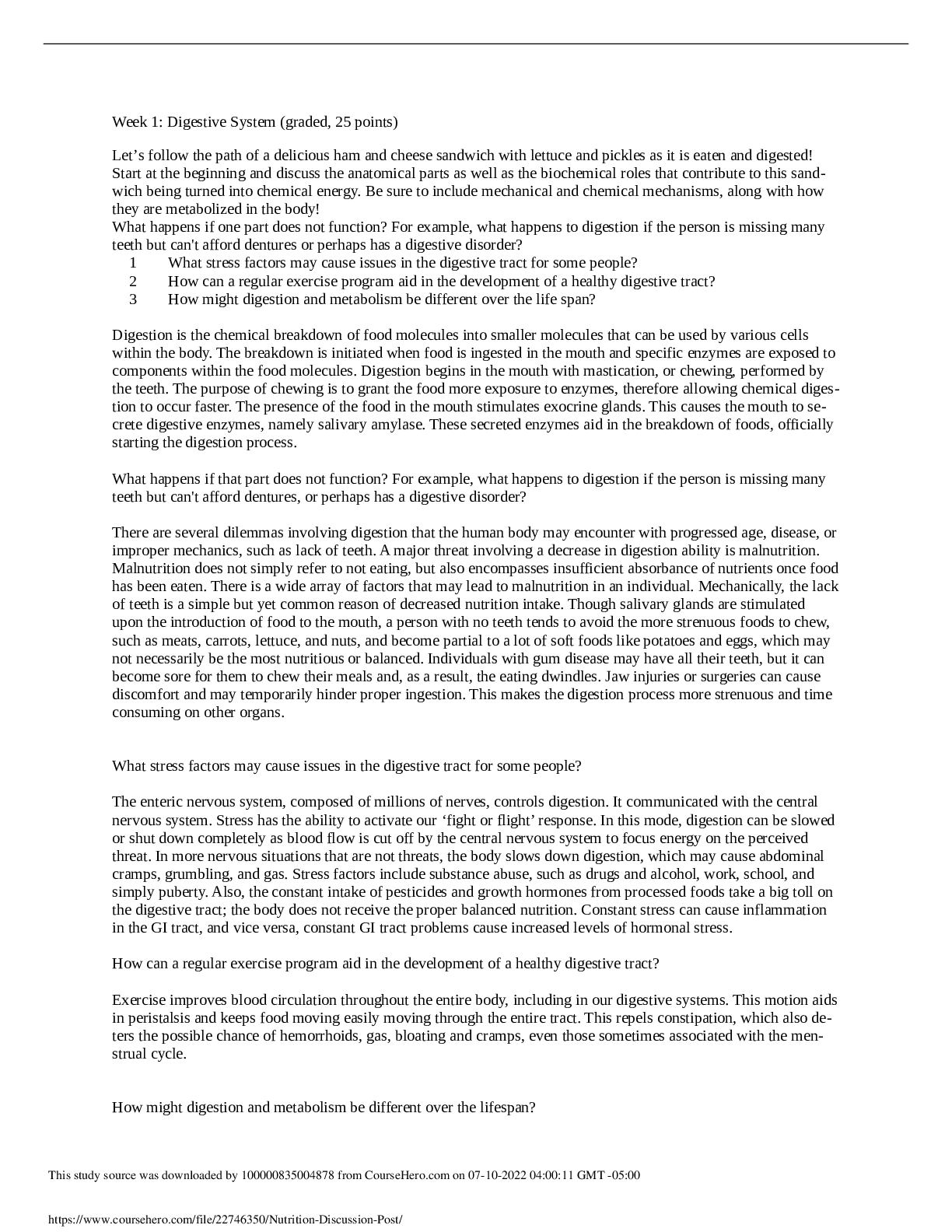
 Chamberlain College Of Nursing (100 Correct Q & A.png)

